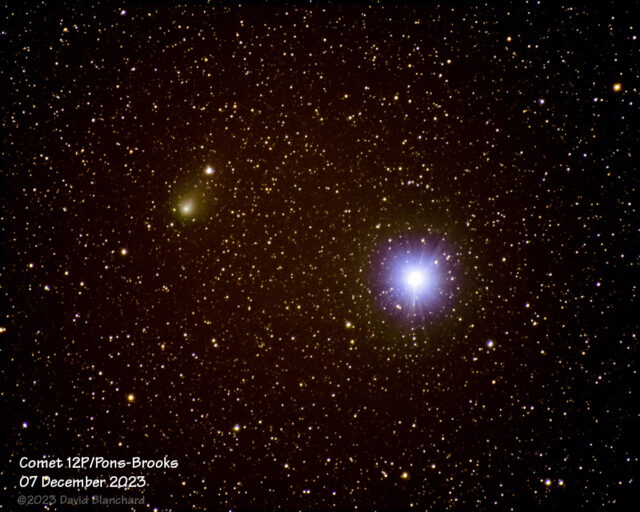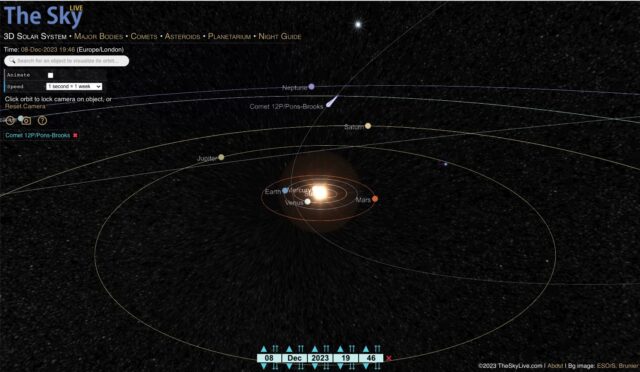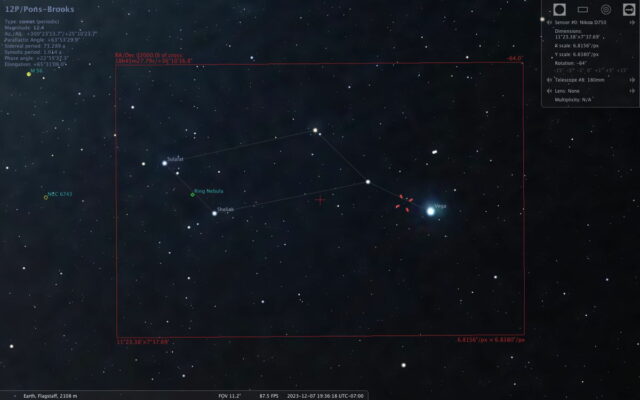This is the first of what will be many posts on this comet. Comet 12P/Pons-Brooks will be in the western sky in the evening for the next few months and could brighten enough to be visible to the unaided eye. Right now, however, it is quite dim at a magnitude of +9.0 and is located near the star Vega in the constellation Lyra.



Comet 12P/Pons-Brooks is a cryovolcanic comet. When exposed to the sun’s warmth the pressure within this cryomagma builds up until it triggers the release of gases, expelling icy fragments (and the gases) through cracks in the comet’s outer layer and into space. 12P has already had multiple bursts which have resulted in rapid brightening.
I ventured to Sunset Crater Volcano National Monument, an International Dark Sky Park, to shoot images of the comet. As noted above, it very close to the bright star Vega which made it very easy to find. My primary goal was to use my Nikon 180mm f/2.8 AIS lens, a legacy manual focus lens known for value in astrophotography and so that I could capture the full constellation. My secondary plan was to use the Nikon 200-500mm lens at its maximum zoom showing just Vega and 12P.
Owing to being a bit out of practice (it happens), both my focussing and star tracking were suboptimal. Something to work on for my next shoot.